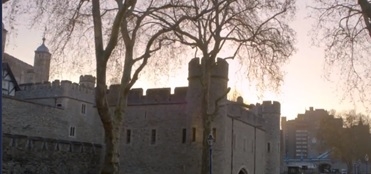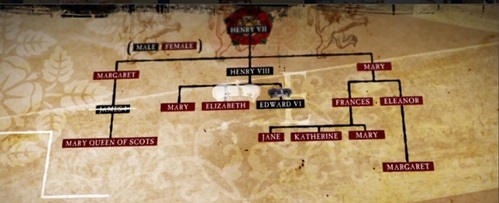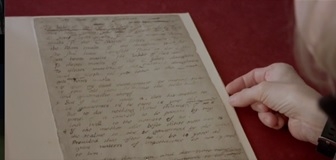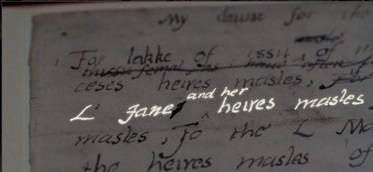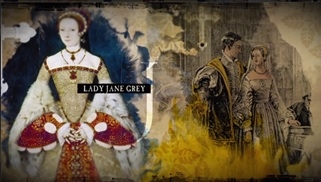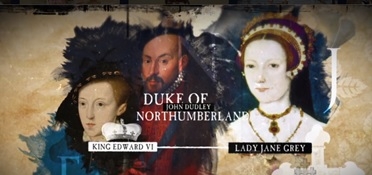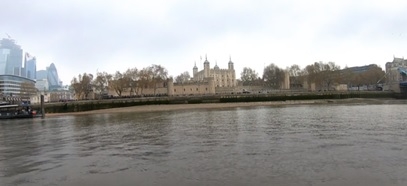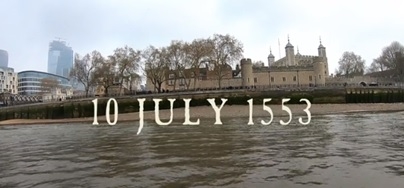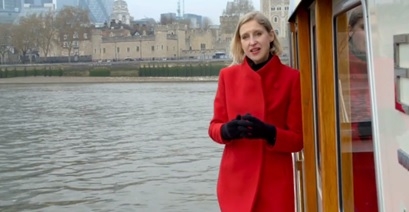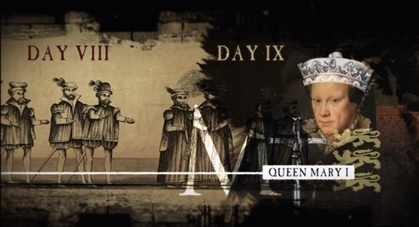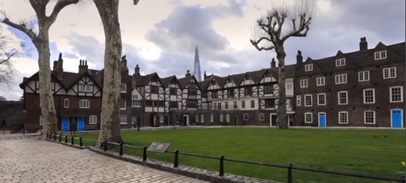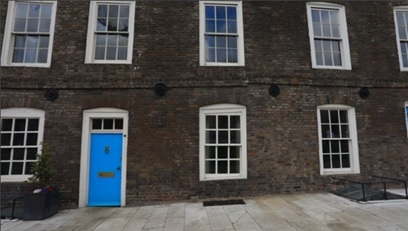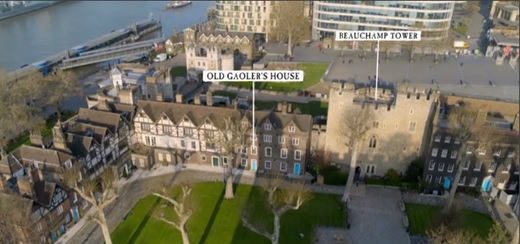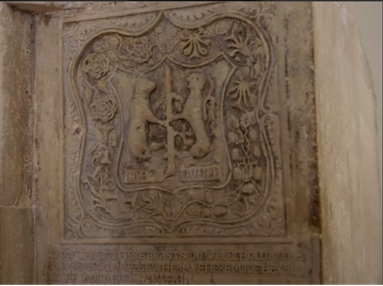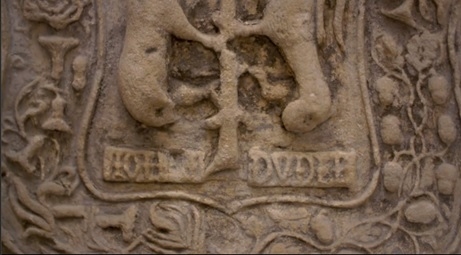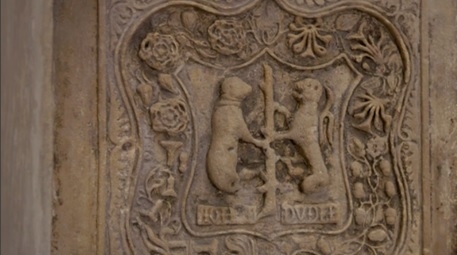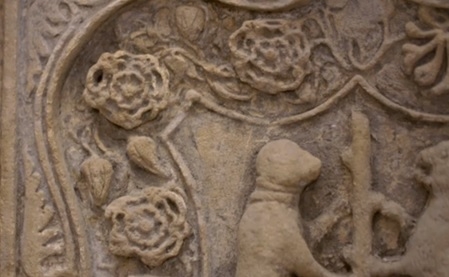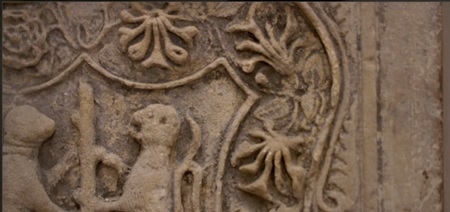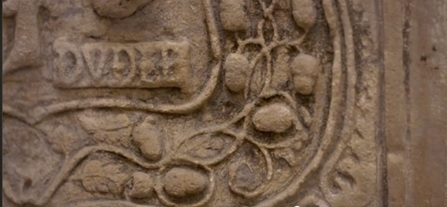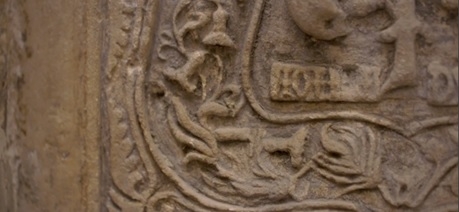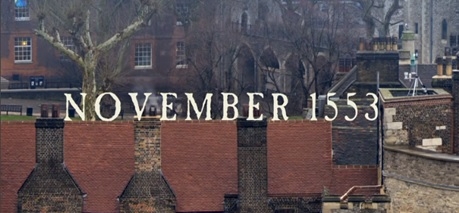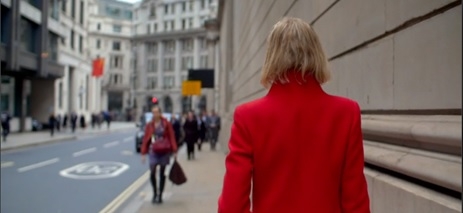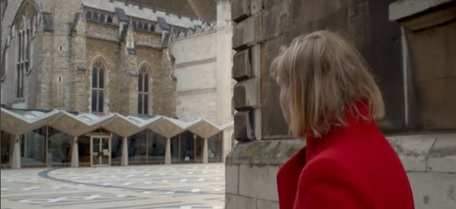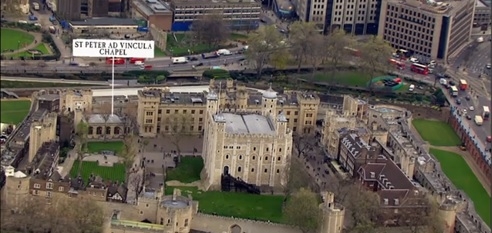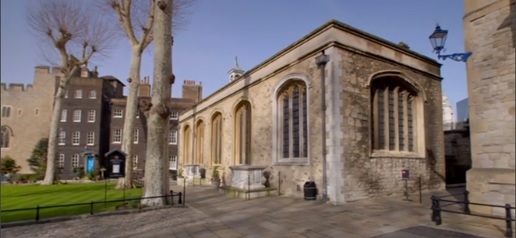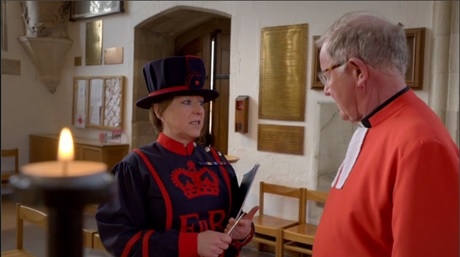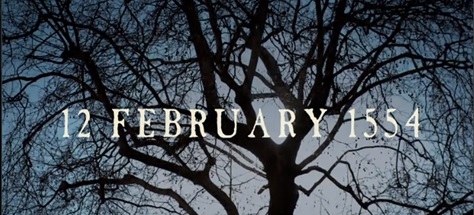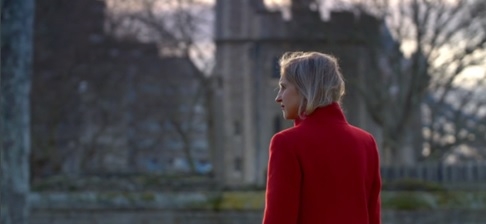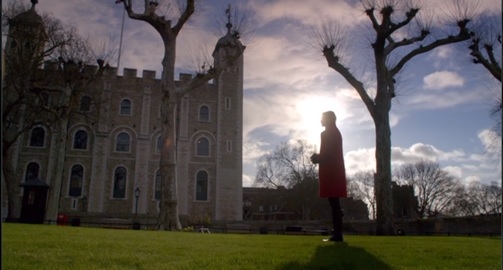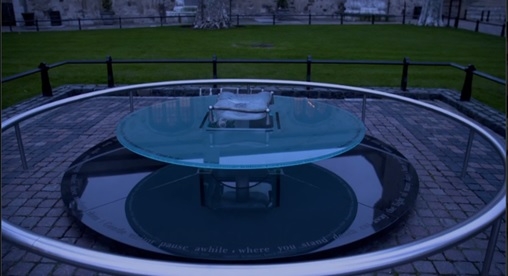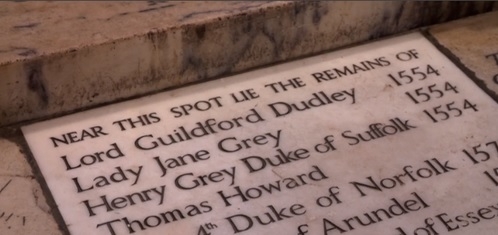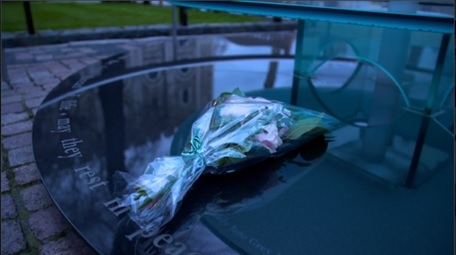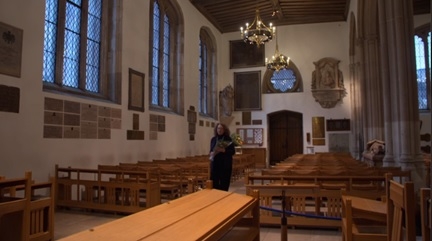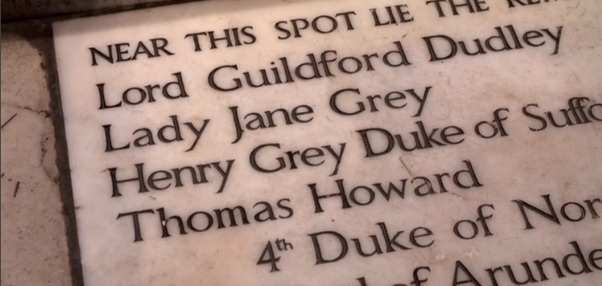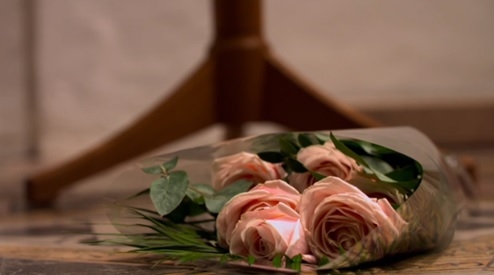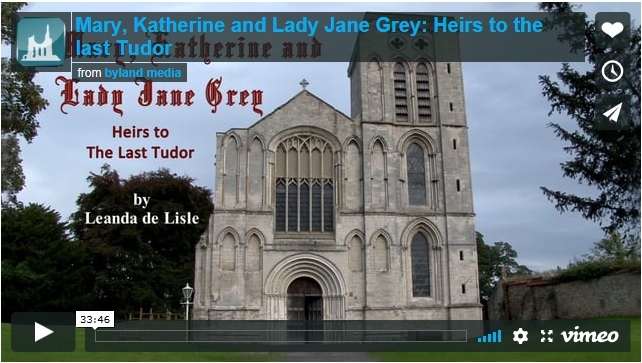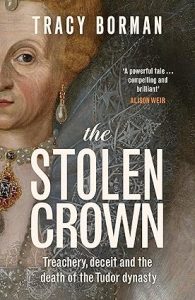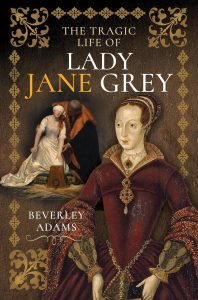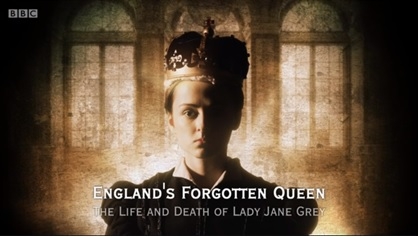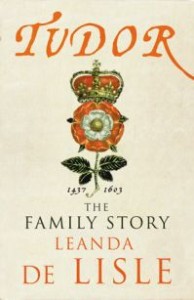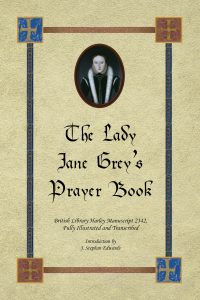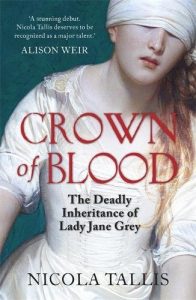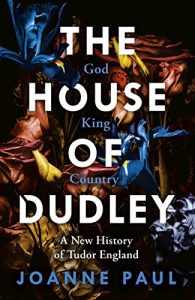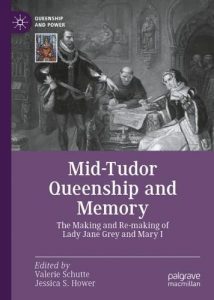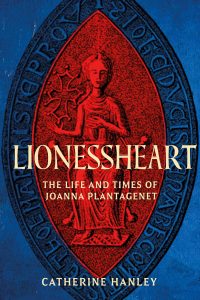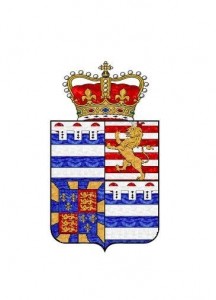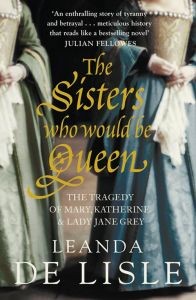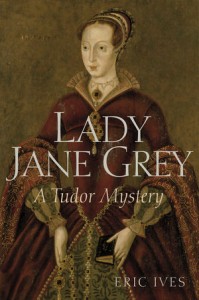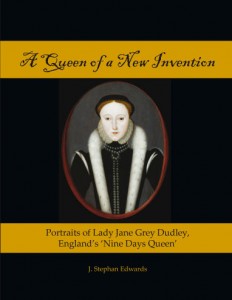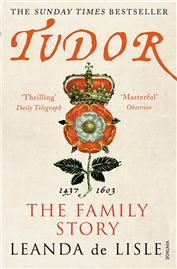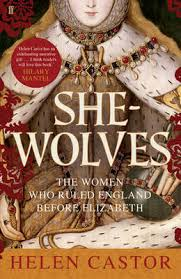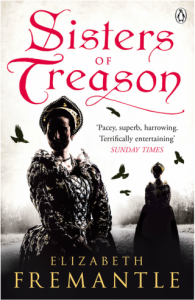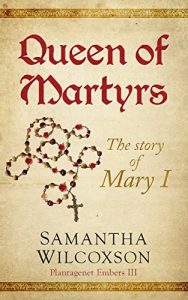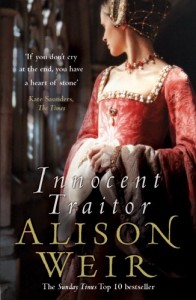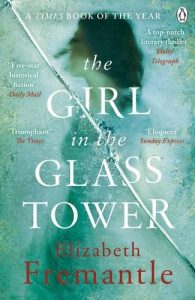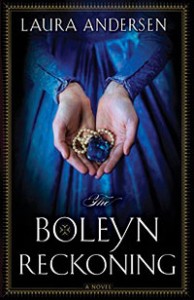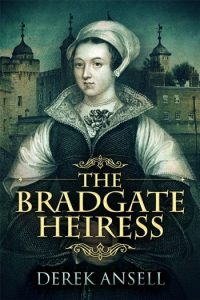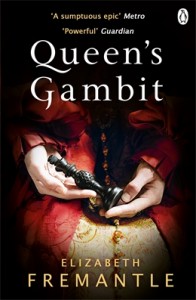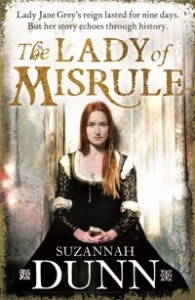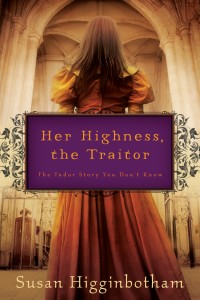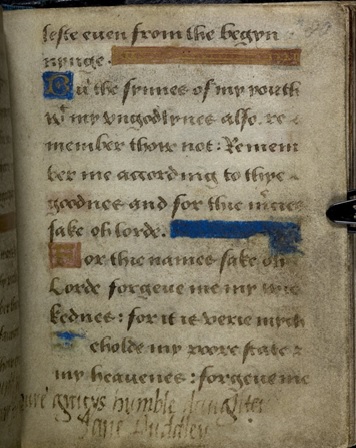The fifth episode of the second series of ‘Inside the Tower of London’ featured Lady Jane Grey and her brief reign.
Narrator – It is a cold morning in February.
Narrator – Edward was determined to keep the faith by finding a suitable Protestant male heir if he died. The problem was everyone with a claim to the throne was a woman and the one with the best claim, his half-sister, Mary was staunchly Catholic.
Tracy Borman – This is written by the dying King, this is actually Edward’s handwriting. He is just 15 years old and he is changing the whole fate of England.
Tracy Borman – You can tell how much Edward’s health has deteriorated by his handwriting, which has changed a lot from earlier in his reign.
Narrator – Changing the succession, so that the crown doesn’t pass to his elder half-sister, Mary, a Catholic but to his Protestant cousin, Lady Jane Grey and her family.
Narrator – Protestant and well educated, Lady Jane was just a teenager. She’d recently been forced to marry the son of the scheming Duke of Northumberland’s young son, Guildford Dudley.
Narrator – As Edward lay dying, he was persuaded by Northumberland to make Lady Jane Grey the next Queen of England. This controversial plan was kept such a close secret, that not even Lady Jane Grey herself, knew that she was heir to the throne. Within days Edward died and Northumberland informed Lady Jane that she was to be Queen of England.
He hastily put his plan into action and packed Lady Jane and his son, Guildford in a barge heading for the Tower. Northumberland was positioning Lady Jane safe within the greatest fortress in the land, in preparation for her coronation with his son by her side.
Tracy Borman has come down to the river Thames to relive the events of that day.
Tracy Borman – The Thames would have been like the M25, it would have been absolutely packed with barges, boats, vessels. It was the main way to get about in Tudor London. I’m getting a Tudor view of the Tower, a true Tudor experience. So it is worth the kind of choppy waters and the slightly chilly weather.
Narrator – On the 10th July 1553, it looked like the D of N’s power grab was running like clockwork.
Tracy Borman – Jane travelled to the Tower by boat from Richmond, ceremony and spectators greeted her arrival here at the Tower.
Jane was just a teenager, as was her very dashing husband Guildford. So they should have been very popular with the crowds, who were waiting there to greet them but in fact the atmosphere was a bit subdued because nobody realised that Jane was here to be proclaimed Queen.
Narrator – The secrecy surrounding the plan meant this grand arrival was a complete PR disaster. The crowds just couldn’t understand why Lady Jane had been chosen as Queen?
Tracy Borman – Well, when they did find out, confusion was everywhere, why Jane? Why not the Princess Mary who was next in line to the throne?
Narrator – To top it all, when they got off the boat Guildford Dudley, son of the hated Duke of Northumberland, broke royal etiquette.
Tracy Borman – In the procession along the Thames, Guildford, Jane’s husband walked ahead of her and he had no claim to the throne at all and worse still, he was the son of a man whom everyone despised. It must have been a very strange day.
Narrator – So Lady Jane Grey, this bright, highly educated teenage girl moved into the Tower and is proclaimed Queen. But almost immediately things started moving very fast. Henry VIII’s eldest daughter, the Catholic Princess Mary had not been idle. She had drummed up massive public support for her more convincing claim to the throne. It was chaos.
Only 9 days after Jane had been proclaimed Queen, Mary had the most powerful English nobles on her side and took the throne.
Lady Jane Grey and her entourage were removed from the Tower’s royal apartments and held captive. Suddenly what had been her palace, became her prison and Jane had no idea about whether she would be allowed to live or if she would die.
Narrator – 450 years ago, right here overlooking this very green, a teenage girl awaited her fate.
Moira Cameron (Yeoman Warder) – Lady Jane Grey was imprisoned at 5 Tower Green, this was formerly the home of the Gentleman Gaoler, the man who was in charge of the prisoners.
Narrator -Jane was held here in the Gaoler’s house, separate from her husband, Guildford Dudley and his 4 brothers. They were imprisoned here, in the neighbouring Beauchamp Tower, reserved for high ranking inmates.
Narrator – Built as part of the formidable Tower defences, the Beauchamp Tower is named after the first prisoner ever held here in 1397. It is renowned for the extraordinary graffiti, many of the inmates scratched into the stone walls hundreds of years ago.
Whilst they are being cleaned, Collections Curator, Sally Dixon Smith is taking the opportunity to examine one unique carving that relates directly to the story of Lady Jane Grey.
Sally Dixon Smith – So, this is the Beauchamp Tower and it holds some of the most amazing prisoner graffiti we have here in the Tower. What we are going to see today is some of the glass protection being taken off. I’ve never seen this without glass on it, so I’m really excited.
Curator – We have removed a lot of grime and dust by brushing lightly because the stone is porous.
Narrator – This is room is where Jane’s husband, Guildford Dudley and his brothers were kept prisoner, while they waited for their fate to be decided. To ensure they would never be forgotten the eldest brother, John Dudley, carved their elaborate emblems into the stone walls.
Sally Dixon Smith – So this was left by John Dudley and you can see his name here and he was Earl of Warwick and the reason he was in the Tower was that he supported his sister-in-law Lady Jane Grey as Queen. He was brought here but also his 4 brothers and his father. His father was in fact executed within a month of them being brought in. And then the five sons, think that is what is going to happen to them to. Will they be executed? Won’t they be executed? They were living in this constant state of fear and paranoia.
Narrator – But the Dudley brothers remained strongly defiant.
Sally Dixon Smith – This is the Dudley’s even in their worst moment, saying we are still really important and showing off. This is what this says to me.
Narrator – The centre of the graffiti shows John Dudley’s coat of arms. A lion, a bear and a ragged staff. These are surrounded by flowers, symbolising his four brothers.
The rose for Ambrose.
The honeysuckle for Henry.
The acorns for Robert.
And the gilly flowers for Guildford.
Sally Dixon Smith – It is so detailed that you do wonder if he got someone professional to come in and do it for them? Or is he the Earl of Warwick and also an incredibly skilled stone mason? It’s a puzzle to me.
Narrator – In November 1553, it was time for Lady Jane Grey and the Dudley brothers to discover their fate.
Queen Mary insisted that they all trudge a mile through the City of London from the Tower to the Guildhall. They had dared to question Mary’s right to the crown and now they were going to pay for it. They would stand trial for treason. Royal Palaces Chief Curator, Tracy Borman has been researching the dramatic events of that day.
Tracy Borman – Jane and the rest were subjected to the public humiliation of being walked through the busy streets of London from the Tower instead of being taken to their trial by barge. It was a very deliberate act on Mary’s part. We know from accounts that Jane was accompanied by an official carrying an axe, the blade pointed away from Jane and the other prisoners because the trial had not yet taken place. The verdict was still to come.
Well after that humiliating walk, they finally reached the place of their trial. Here at the Guildhall. All of those accused, Jane and the rest pleaded guilty and they were condemned for high treason. Once the trial was concluded, the group were led back from the Guildhall to the Tower of London by an official carrying the axe, which was now pointed towards them. It was a sign that they were going to be executed and once back at the Tower, Jane would never leave it again.
Narrator – The teenage girl, Lady Jane Grey, who had been thrust on to the throne, was now condemned as a traitor. She was back under lock and key in the Tower, hoping desperately that Queen Mary would pardon her.
At its heart is the Chapel of St Peter Ad Vincula, the Tower’s parish church. Built during Henry VIII’s reign, it’s best known as the final resting place of two of Henry’s wives, Anne Boleyn and Katherine Howard.
Today, the 12th of February, Canon Roger Hall is preparing for a ceremony of remembrance on the anniversary of the execution of another Tudor Queen.
Canon Roger Hall – So here we are in the Chapel Royal, probably the most famous part of the chapel here where there are 15 members of the royal family buried.
Narrator – In 2007, Moira Cameron made history as the first ever woman to become a Yeoman Warder. She also volunteers as the Chapel clerk. She loves keeping the church looking its best.
Moira Cameron – Part of my duty is to make sure that everything is a little bit glistening. So, I do tend to try and come in as often as I can, even if it is only for 10 minutes, maybe just to clean some of the candlesticks or some of the brasses.
…Coming in here when it is quiet in here and quiet outside, it’s a special place. Considering what happened here, the people who’ve been buried in here and what they were buried for, it still has a peacefulness about it, and I think that that is quite important these days, to get some peace sometimes.
Narrator – In 1554, Lady Jane Grey, a devout young Protestant girl and her husband, Guildford Dudley had been found of guilty of treason. She had been on the throne for just nine days. Now these two young people had to prepare for their execution.
Today is the anniversary of that fateful day.
Tracy Borman – It was on this very day that Lady Jane Grey faced her execution, 465 years ago. I’ve never actually been here on the anniversary and it is quite an extraordinary feeling to think that in a window just behind me here, Jane would have been standing and watching while her husband, Guildford was led out from the Tower to Tower Hill for his execution.
She would of still have been watching when his bloodied body was brought back, his head wrapped in a cloth. She knew that she was going to be next.
Narrator – Jane would also have seen her own scaffold being built on the green, before she was brought out to face the executioner.
Tracy Borman – You’ve got to remember that she was only a girl, of about 17 and yet all the witnesses attested to how calm and accepting she was, and that composure never wavered. Even when facing the horror of an execution.
One of the accounts tells how, when Lady Jane first mounted the scaffold, she says ‘Good people, I am come hither to die’, and so the speech continues. It is very eloquent, there is no bitterness, she seemed resigned to her fate but then when she sees the axe man, she does slightly lose it and she tells him, I pray you dispatch me quickly…and then she kneels down and she is blindfolded. Because of that she can’t see the block anymore and she cries out, ‘What shall I do? Where is it?’ Until one of the bystanders and it says that she laid down upon the block and stretched forth her body and said ‘Lord, into thy hands I commend my spirit.’ And so, she ended. And that was the end to the very brief and very tragic life of the nine days queen.
Narrator – Even in brutal Tudor times, the execution of this young couple was considered extremely harsh. For hundreds of years there was no memorial to this terrible event here at the Tower. But now, every year on the 12th February, the nine days queen is once again honoured.
Canon Roger Hall – Today of course we remember very specifically Lady Jane Grey, whose memorial lies here and in fact this is quite a recent addition to the chapel because there was no memorial to her until about 20 years ago.
Narrator – Yeoman Warder, Moira Cameron, recalls the first time she happened to be here on the 12th February.
Moira Cameron – I came out one day, later on in the afternoon and there were flowers on the memorial, and I said to somebody, what are they for? And they said today is the anniversary of Lady Jane’s execution…I think that is when I realised that the stories that we tell to millions of people every day. These stories are real, about real people, they are not just pretend and that really resonated with me.
Narrator – As the evening draws in, the Tower is closed to the public but on this one day of the year, there is a special visitor, who is always allowed into the chapel after hours to pay her respects to Lady Jane Grey who is buried here. She has visited without fail for the last 20 years as an act of remembrance on the anniversary of Lady Jane’s execution.
Cannon Roger Hall – We have one lady, who comes every year who wants to say special prayers for Lady Jane Grey and remember her. We honour that and give her the space and the time to do that.
Visitor – Lady Jane, I think would have been a very great Queen. She was highly educated and very sensitive, I think to the nuances of things that were going on around her. She was a young woman who did not deserve to die. She was manipulated by very conniving men, who had agendas of their own. And she was told she had to die for doing absolutely nothing and there are lots of people in this world today who are imprisoned in all kinds of situations for doing absolutely nothing…So that is why I come and pray for them.
Canon Roger Hall – Almighty God we remember today Lady Jane Grey and all those in the Tower of London. Amen.
Visitor – I remember Jane and I remember all of those people as well…It is an act of remembrance and I believe that Jane really deserves to be remembered.


